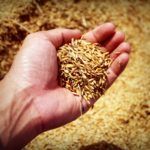The European Food Safety Authority (EFSA) has updated its assessment of the risks posed by Xylella fastidiosa to plants and crops in the European Union. The new assessment provides new insights and conclusions on controlling existing outbreaks of this pest and preventing further spread in the EU.
EFSA’s Plant Health Panel (PLH) used computer modelling to simulate how X. fastidiosa spreads across short and long distances under different conditions. The modelling showed the importance of implementing control measures, such as those specified by the European Commission, to prevent further spread and even eradicate outbreaks. It illustrated the relative effectiveness of using different-sized buffer zones to control an infected area.
The simulations also demonstrated the importance of controlling the insects that are known to transmit the pathogen in Europe – such as the spittlebug Philaenus spumarius – and minimising the delay between detection and implementation of control measures such as removing infected plants and establishing demarcated areas.
Is there a cure?
The assessment confirms that there is still no known way of eliminating the bacterium from a diseased plant in field conditions. The effectiveness of chemical and biological control measures has been assessed in recent experiments. The results show that they may temporarily reduce disease severity in some situations, but there is no evidence that they could eliminate X. fastidiosa in field conditions over a long period of time.
Which countries are at risk?
Computer simulations showed that although most of the EU territory has climate types under which the pathogen is known to occur elsewhere in the world, the areas most at risk are in southern Europe (see map). However, the modelling showed some variation to this general rule according to the subspecies involved. For example, it suggested that X. fastidiosa subsp. multiplex had greater potential to establish in northern Europe than other subspecies.
The information on risk of establishment will be valuable in setting up surveillance and detection programmes in different Member States. EFSA is currently developing survey guidelines on X. fastidiosa with plant health organisations across the EU.
Background
Xylella fastidiosa is one of the most dangerous plant bacteria in the world. It causes a wide range of diseases, with huge economic impact on agriculture, gardens and the environment. The four most commonly reported subspecies are fastidiosa, pauca, multiplex and sandyi. The bacterium lives in the plant xylem tissue and is commonly spread by insect vectors feeding from the plant xylem. X. fastidiosa was first detected in Europe in 2013, when an outbreak began in Apulia, southern Italy. Since then it has been reported in France (Corsica and Provence-Alpes-Côte d’Azur), Spain (Balearics, Valencia, Madrid), central Italy (Tuscany) and Portugal (Porto). EU emergency control measures are in place in all the outbreak areas.
More information
Access the complete news
Effectiveness of in planta control measures for Xylella fastidiosa






Leave a Reply